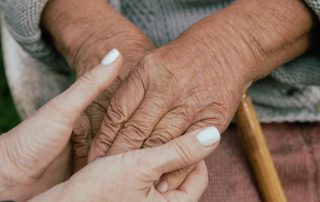Stress and How It Affects the Body
Stress is something we all deal with—whether it’s racing to meet deadlines, dealing with financial pressures, a sick loved one, or facing global challenges like conflicts and pandemics — it’s unavoidable. But not all stress is created equal. In this article, we examine types of stress and the physical effects it has on the body — breaking it down system by body system. Then we’ll discuss role of exercise in counteracting stress, recommend the best type of exercises for stress management, as well as providing practical tips to incorporate stress-reducing activity into your daily routine. Table of Contents: Types of [...]
Treatment for Cardiovascular Effects of Long COVID
Long COVID can impact a wide range of bodily systems, including complications of the cardiovascular system. Symptoms like chest pain, heart palpitations, dizziness and shortness of breath are indicators of damage to the heart muscle and blood vessels. In this blog, we explore common symptoms, including the cardiovascular effects of long COVID. We also examine the role of physiotherapy in the assessment and treatment of clients with the condition. Table of Contents What is Long COVID? Symptoms of Long COVID Cardiovascular Effects of Long COVID Long COVID Physiotherapy Assessment Long COVID Physiotherapy Treatment and Intervention Rebuilding Strength and Reclaiming [...]
Occupational Therapy Concussion Treatment
In the past, medical advice suggested that if you sustained a concussion, you needed prolonged bed rest with minimal engagement in activities for up to two weeks. However, this approach has changed with emerging studies about concussions. The latest studies have found that early education and intervention are critical in concussion rehabilitation, along with a gradual return to activities. This evidence-based approach can help prevent prolonged symptoms from occurring and negatively impacting a person’s functional abilities. In this article, we examine the occupational therapist’s specialised role in concussion management—from helping you manage your post-concussion symptoms to gradually returning to [...]
Alzheimer’s Disease: Tools and Resources for Caregivers
Alzheimer’s disease is a chronic neurodegenerative disease. Over time, brain cells slowly get destroyed impacting thinking ability and memory - even movement can decline overtime. The process is irreversible and eventually grows severe enough to interfere with daily activities of living. As Alzheimer’s progresses, caregivers (whether its family members or personal support workers) play an increasing role in assisting those with Alzheimer’s disease to complete their daily activities such as eating, dressing, cleaning and helping them get around. Caring for a loved one with Alzheimer’s Disease is a challenging yet vital role, requiring both emotional resilience and physical preparation. In [...]
Five Reasons Exercise for Teens is Essential
Engaging in physical activity is an important part of our physical and mental health. Particularly for adolescents, who experience a multitude of changes that can lead to significant vulnerability to developing mental health problems. These changes have been intensified in recent years by the effects and risks caused by the use of new technologies and physical inactivity, as well as the COVID pandemic. Specifically, reductions in physical activity and increased mental health problems have been observed in teens following the COVID pandemic.[i] Physical activity has been consistently found to improve mood and sleep, as well as decrease stress, anxiety [...]
Finding a Community of Support for Postpartum Pelvic Dysfunction
Postpartum pelvic dysfunction refers to a range of conditions that affect the pelvic floor following childbirth. These issues can vary in severity and may interfere with a woman's physical, emotional, mental and sexual well-being. Common issues include incontinence, pelvic organ prolapse, pelvic pain, sexual dysfunction. These conditions are common and expected to improve with time and the right care and support. Unfortunately, there is a societal tendency to downplay or ignore pelvic health issues. This may be a result of cultural stigma, lack of awareness, minimization of symptoms, as well as barriers to care. These factors contribute to underreporting, [...]






